We gave thanks
Thursday, 27 November 2025
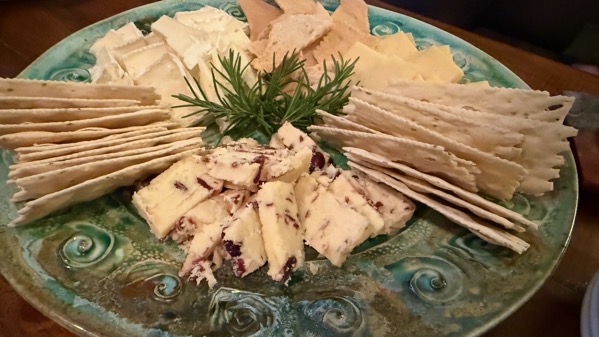
Our evening began with this platter, and the yumminess continued. Mmmmm.
Thursday, 27 November 2025

Our evening began with this platter, and the yumminess continued. Mmmmm.
Monday, 3 November 2025
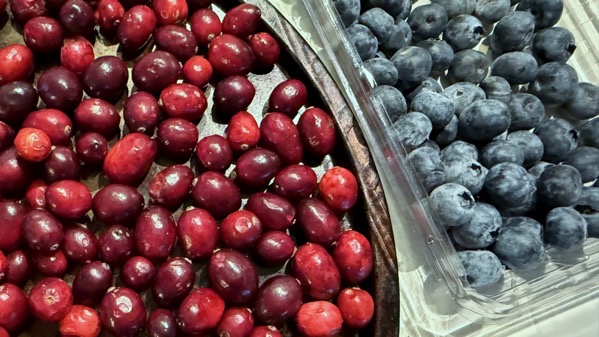
On today’s grocery expedition, we found autumnal antioxidants, the red and blue flavors. I was particularly excited by the early cranberries, early meaning before T-giving week.
Saturday, 11 October 2025
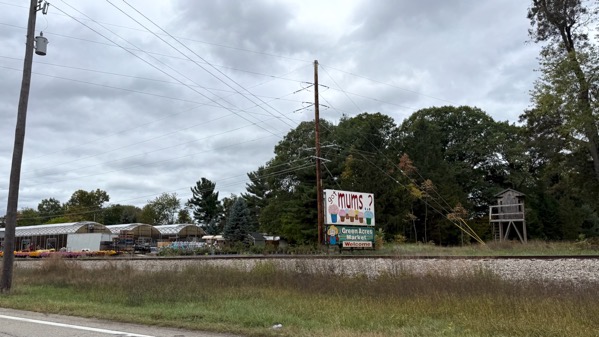
Our morning began west of Traverse City, and therefore off our typical I-75 axis. Pleasantly. So, we stayed west of I-75 all through Michigan, where farm stands selling pumpkins and big pots of mums were abundant. Look for mums on the far left between the arch-roofed structure and the RR tracks.
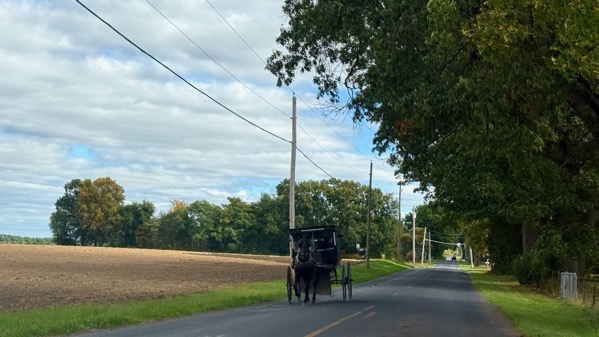
Our trajectory took us through the “heart of Amish country,” Shipshewana, Indiana. Hence: buggies and many farms with paddocks of horses. We even saw a four-horse team on the road, but pulling no farm equipment, only the driver’s platform with an empty hitch-bar.
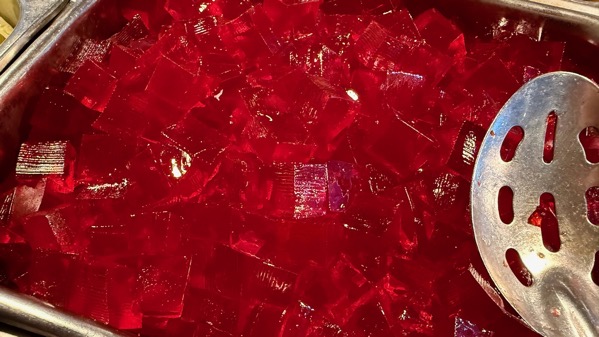
We decided on a buffet dinner (a vast improvment over Arbys and the like). The offerings of course included red jello. [Not sampled.]
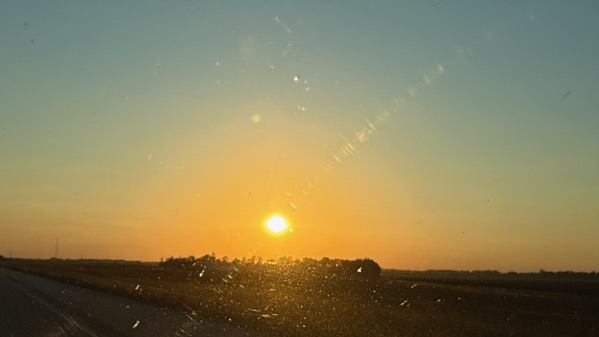
And here’s today’s sunset, complete with windshield flares. No Great Lake in Southern Indiana, even a bay of a smallish lake, although we did pass by Big Lake at some point.
Thursday, 21 August 2025
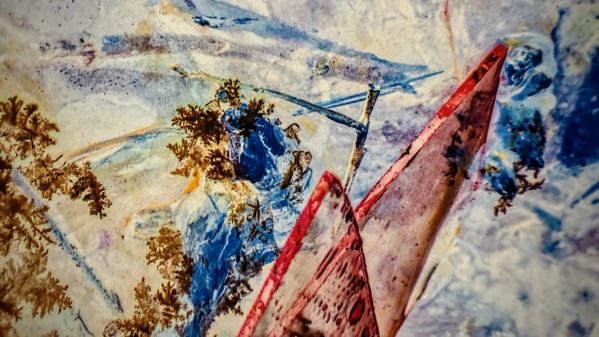
I know you’re supposed to eat more protein as you get older, and I’m surely more elderly, in fact elderly enough to eat more protein. The latest numbers I’ve read are that I should bump it up from my “adult” days on the order of 20% to something like 70 grams or more (probably more). I need to consult nutrition tables to figure out how to do that.
Tuesday, 29 July 2025

Tonight, we enjoyed a group dinner-on-the-deck, with four younguns in constant motion (more or less), around us assorted adults. Here, the two six-year-old boys attempt to hoover up all the smoked whitefish appetizer. The moms sent them elsewhere soon after this, and the rest of us were able to nosh….
Monday, 7 July 2025
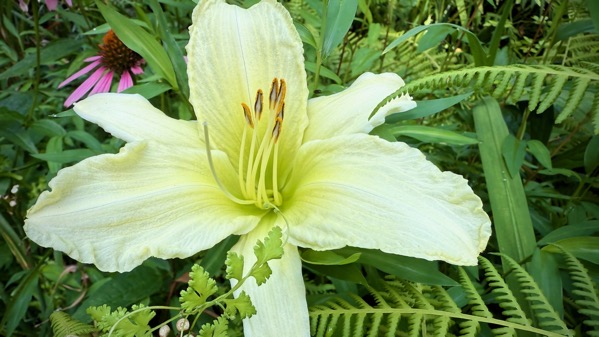
I have read that some folks eat lily bulbs or use them for medicine, but I’m sticking to enjoying merely looking at the flowers. Besides, if you consume the bulbs, that means no flowers next year.
Sunday, 15 June 2025
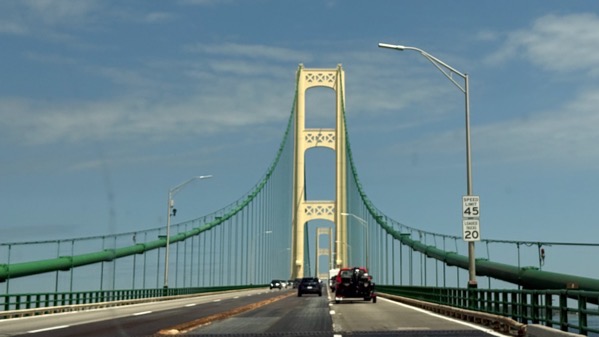
Proof of bridge crossing. Also proof that traffic flowed at 45 mph in two lanes each way, as normal. [Ignore bug smears on windshield and assistant photographer’s quirky focus.]
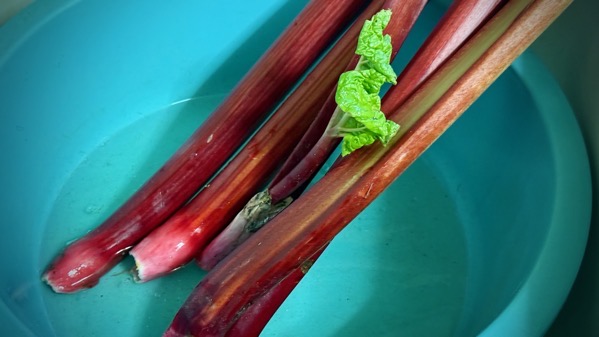
Ah, we’ve returned to the land of rhubarb. I was taught to pull the stem gently yet forcefully (no tugging) away from the crown (the direction varies from “up”), and I didn’t intend to select a leaf that was nurturing a wee leafette—oops. BTW, the sauce was the strongest pink of the year, almost luminous.

Proof that the lupin remain gorgeous, although somewhat disguised since the grass has shot up to full height, sometimes higher than the lupin.
Friday, 23 May 2025
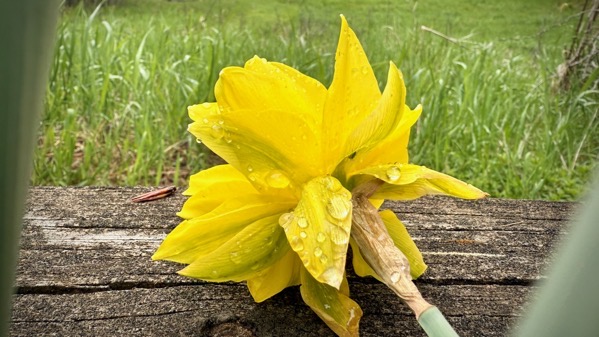
Proof we had rain overnight….
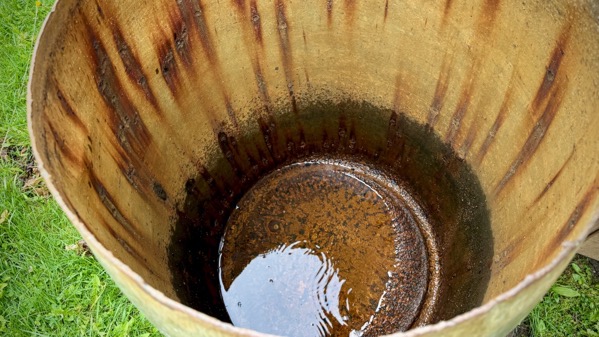
Proof it wasn’t much. [The rain barrel stays indoors all winter…if I don’t forget—so this is MaNachur’s first deposit of 2025.]
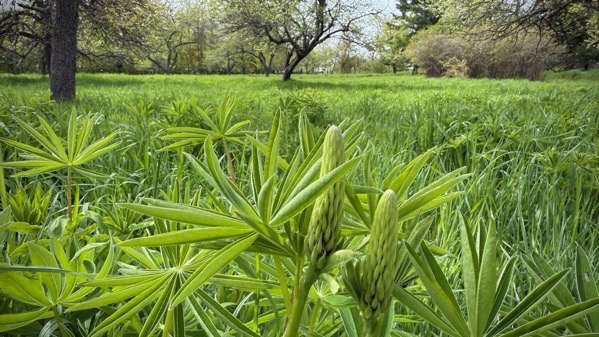
First lupin buds I spotted…the rest are just vegetation for now.

Although the summer veg crop is not coming in yet, we went for a veggie-laden dinner…raw lettuce, tomatoes, and radishes, plus “semi-stir-fried” broccoli…with medallions of salt-n-peppa pork tenderloin. [Lousy photo quality, but the eatin’ was good!]
Thursday, 8 May 2025

The benefits of staying with a friend who’s a baker are obvious…and tasty: apple pie.
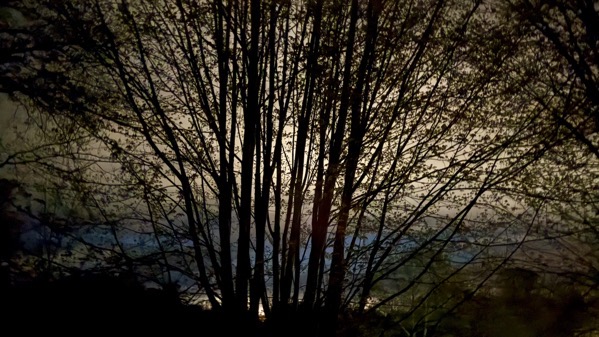
Trees at night…not yet leafed out. BTW, this far north, today the mowing guys did our friends’ yard for the first time this year. As is common, the mowing guys change out their equipment and clean the driveway through the winter.
Sunday, 4 May 2025
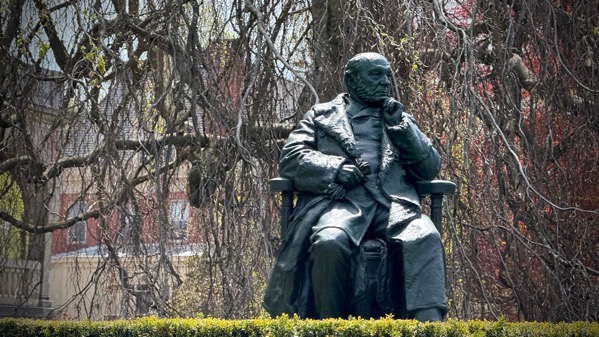
We went through the core business district of Newport, saw looming masts, shops of various sorts, and many tourists. Then, we looped around among the fancy houses, and I mean fancy. However, this is the only photo I took during that entire circuit, and I don’t know who it is…just driving by, ya’know.
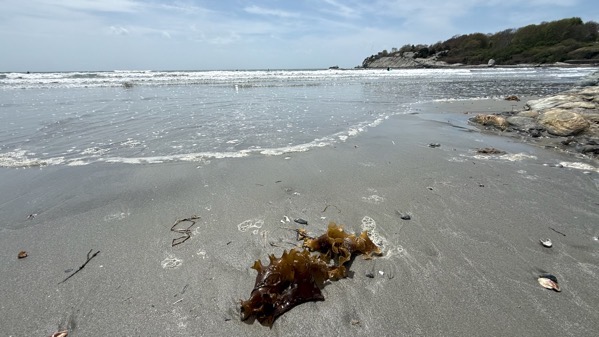
I read up a bit on Rhode Island as we drove along, and wondered where that island was, as the state is mostly not-island. Turns out this island, now more commonly called Aquidneck Island, is historically tagged as the island called Rhode, Ile of Rods, or Rhod-Island. BTW, if you can see dots out in the surf, they’re surfers. They only get short rides, but then they don’t have to paddle much to set up again.

Today’s drink I’m sure I never had: a coffee Fribble at Friendly’s (one of the dwindling few still in business). Egads, it was sweet. And huge.
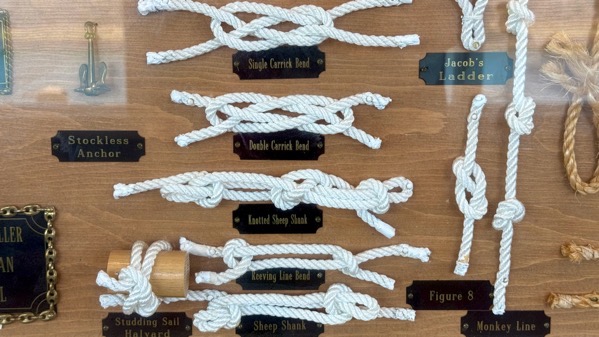
I enjoyed this large knotical display 🤣 🤣 🤣 but you only get to see a few examples.
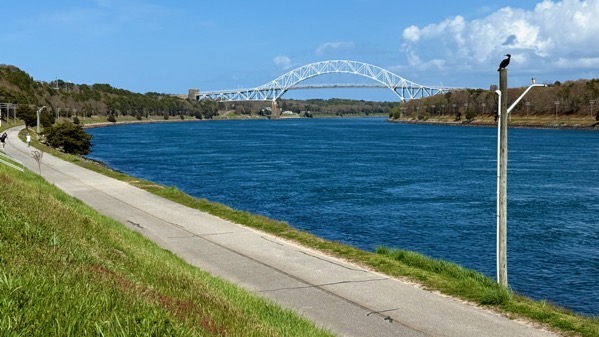
Technically, the border is more complicated, but this canal is commonly considered to separate Cape Cod from the mainland, which is where I’m standing and the cormorant is posing.
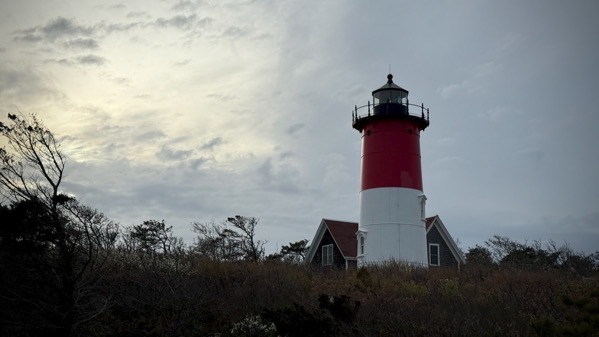
Our late-day adventure was a visit to Nauset Lighthouse, at the beach where The Guru and his fam used to hang. It was relocated in 1996 because coast erosion threatened to topple it. This lighthouse originally stood in a different town from 1877–1923, when it was moved to this area. So this is the third spot for it (I hope I’m making sense 😄; g’night).